Characterization and history of arterial hypertension leading to inpatient treatment
- PMID: 27776558
- PMCID: PMC5075984
- DOI: 10.1186/s13104-016-2285-y
Characterization and history of arterial hypertension leading to inpatient treatment
Abstract
Background and aims: Arterial hypertension is a major cause of death worldwide. For the most part, treatment for hypertension can be performed on an outpatient basis. However, some patients also require inpatient treatment, and the contributing factors for this remain unknown. Therefore, the primary objective of the present study was to determine which patient characteristics are associated with inpatient treatment for arterial hypertension.
Methods: Here, we conducted a mono-centric study of 103 hypertensive subjects, who were treated as inpatients in the Department of Nephrology and rheumatology of the university medical faculty of Göttingen. Therapies were not altered, and data collection was performed retrospectively. In addition to epidemiological information, the following data were recorded: patient symptoms, blood pressure (BP), anti-hypertensive therapy, and concomitant diseases (e.g., renal and cardiovascular conditions).
Results: Approximately half (53 %) of all subjects treated on an inpatient basis displayed elevated BP (>140/90 mmHg), while the remaining 47 % of patients showed normotensive readings (<140/90 mmHg) following admission. Moreover, 34 % of patients could be classified as therapy refractory. The main reasons for hospital admission were hypertension-related symptoms, including shortness of breath, dizziness, and headache (69 %). These patients were multi-morbid, with approximately 60 % displaying a secondary form of hypertension. Indeed, over half of the subjects showed renoparenchymatous forms of hypertension, and a large percentage of patients received hypertension-inducing drugs (32 %). Moreover, a high proportion of inpatients were treated with reserve antihypertensives, with the most commonly used drug being Moxonidin.
Conclusion: The majority of hypertensive patients were hospitalized due to their clinical symptoms and not as a result of BP values alone. The high proportion of patients with secondary forms of hypertension or treated with BP-boosting medications was striking.
Keywords: Arterial hypertension; Inpatient; Patient characteristics; Treatment.
Figures
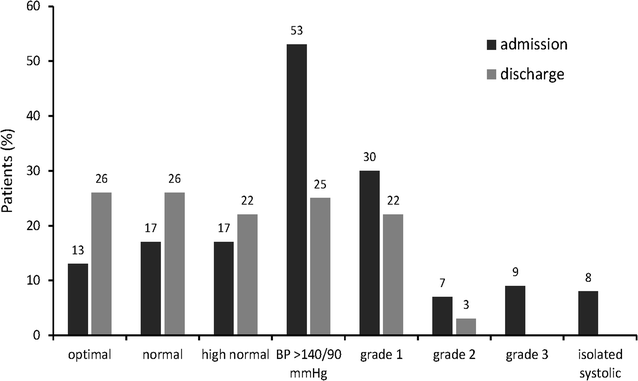
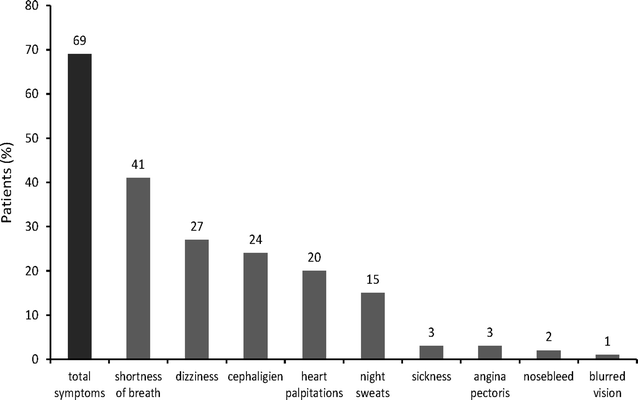
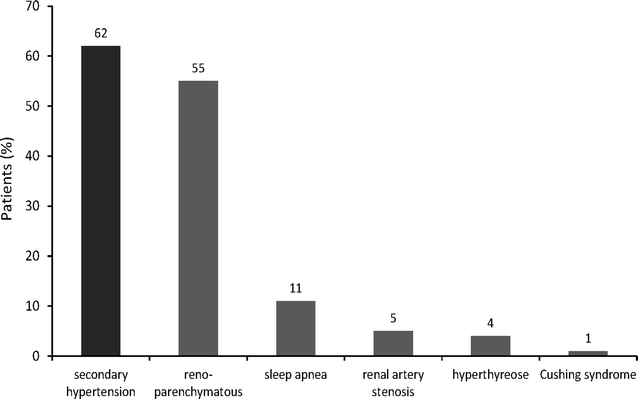
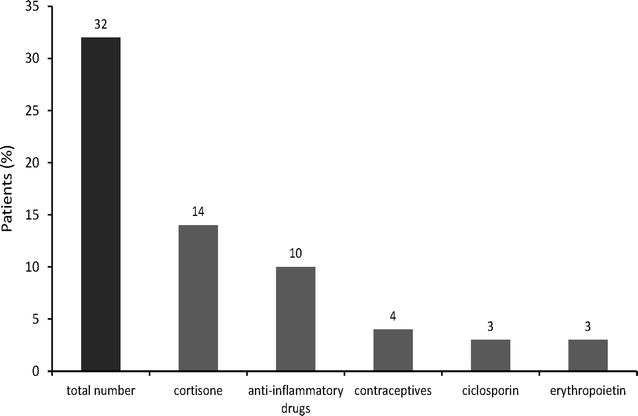
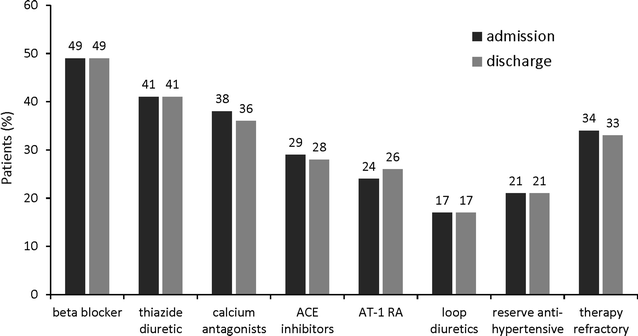
Similar articles
-
Shifting trends in the pharmacologic treatment of hypertension in a Nigerian tertiary hospital: a real-world evaluation of the efficacy, safety, rationality and pharmaco-economics of old and newer antihypertensive drugs.J Hum Hypertens. 2003 Apr;17(4):277-85. doi: 10.1038/sj.jhh.1001538. J Hum Hypertens. 2003. PMID: 12714973
-
ESH-ESC guidelines for the management of hypertension.Herz. 2006 Jun;31(4):331-8. doi: 10.1007/s00059-006-2829-3. Herz. 2006. PMID: 16810473
-
Clevidipine: a review of its use in the management of acute hypertension.Am J Cardiovasc Drugs. 2009;9(2):117-34. doi: 10.2165/00129784-200909020-00006. Am J Cardiovasc Drugs. 2009. PMID: 19331440 Review.
-
Effect of rofecoxib on antihypertensive effects of candesartan in experimental models of hypertension.Methods Find Exp Clin Pharmacol. 2005 Jan-Feb;27(1):11-6. doi: 10.1358/mf.2005.27.1.875431. Methods Find Exp Clin Pharmacol. 2005. PMID: 15834454
-
[Hypertensive emergency and urgence].Herz. 2003 Dec;28(8):717-24. doi: 10.1007/s00059-003-2506-8. Herz. 2003. PMID: 14689106 Review. German.
References
-
- World Heart Federation. Cardiovascular disease risk factors: hypertension. Internet: http://www.world-heart-federation.org/cardiovascular-health/cardiovascul.... 2014. Accessed on 10. Mar 2014.
-
- World Health Organization (WHO). A global brief on hypertension: silent killer, global public health crisis. WHO reference number: WHO/DCO/WHD/2013.2. April 2013.
MeSH terms
Substances
LinkOut - more resources
Full Text Sources
Other Literature Sources
Medical

